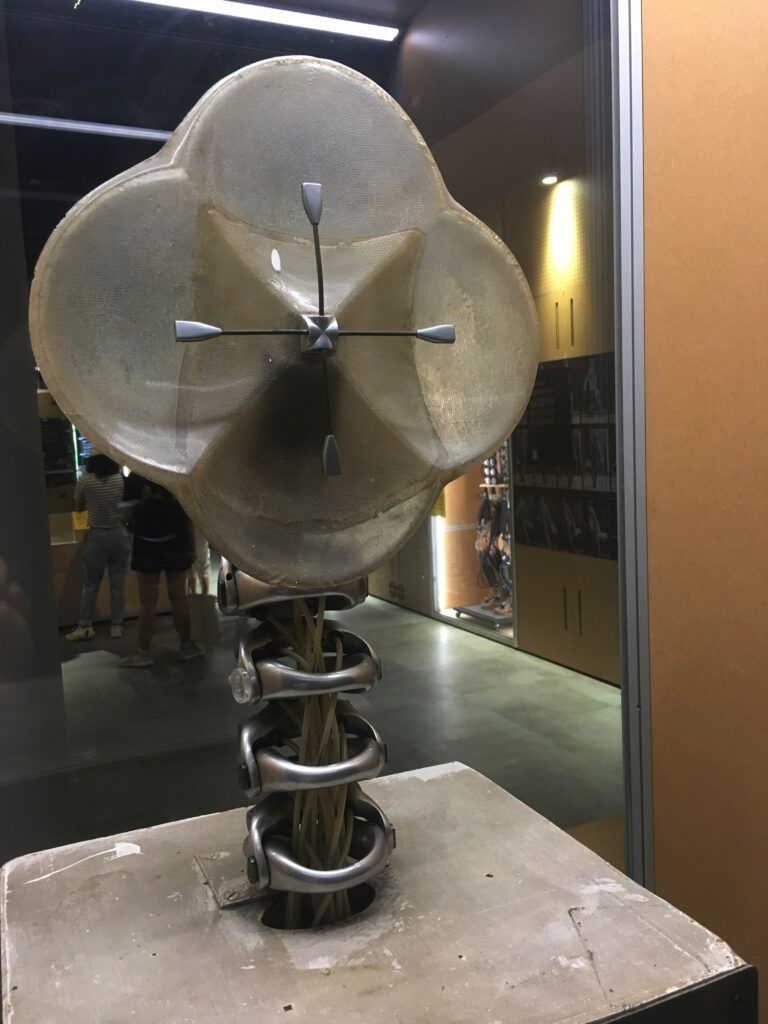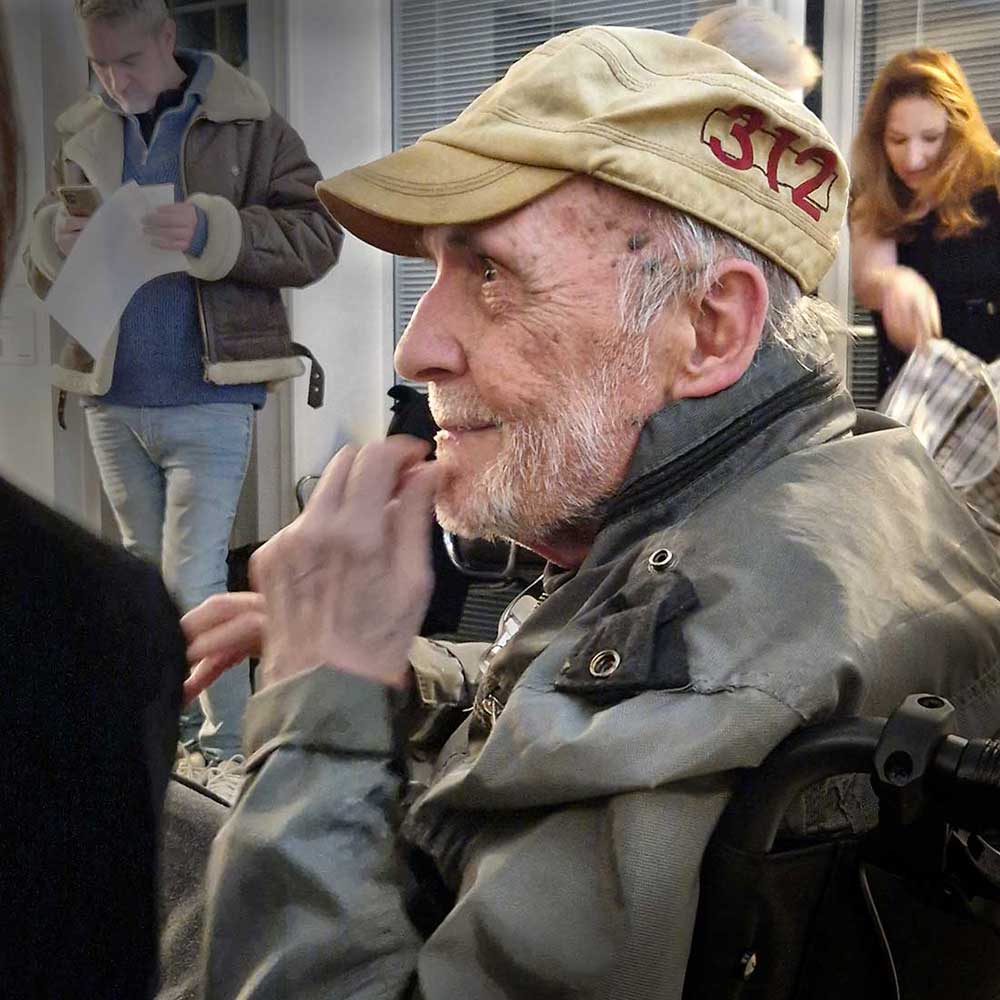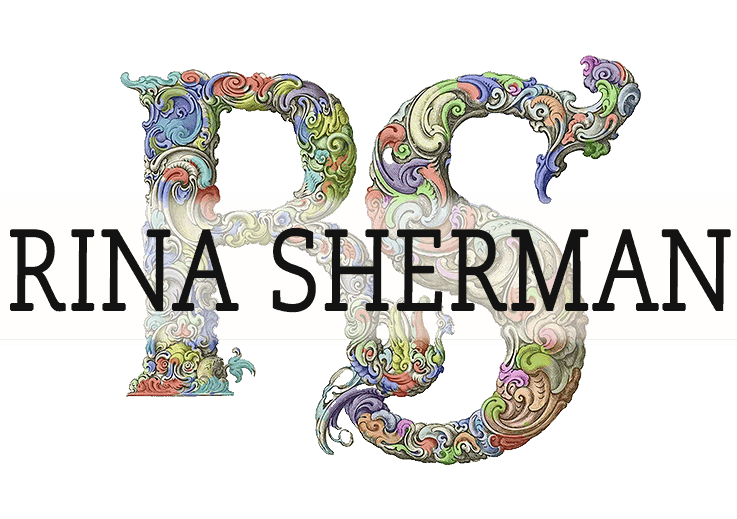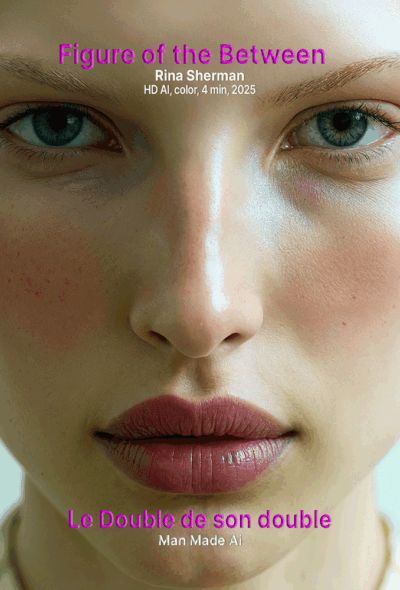Man Made AI / Rina Sherman
La conscience humaine en dialogue avec le calcul accéléré tisse un fil entre présence, code et sens de notre temps.
Rina Sherman
Man Made AI / Rina Sherman
HD AI, couleurs, 4 min, 2025
The Figure of the Between – Le Double de Son Double explores the role of AI and accelerated computing in life on earth. It delves into the shifting boundaries of identity in an era where technology increasingly blurs the line between human and machine. Man Made AI / Rina Sherman, a poetic journey investigating accelerated computing as both creator and creation, blurring the boundaries between human consciousness and machine dreams.Introducing Kira Kadok in AI aka Kiara K-Doc for archival
I’m Kira Kadok in AI
aka
Kiara K-Doc for archival
Everything you say to Kira Kadok will be sent to Kiara K-Doc Archival
@manmade_ai
fieldwork, research, création, curating & archival
@fonds.rinasherman.files
collections d’archives multimédia
Whoever has the Data has the Power
The Hand That Gives
There’s a thing that’s been with us from the beginning—
a mark on stone, a scratch, a figure,
somebody reaching into time and saying:
“This happened to me.”
Rock art, engravings—not just images,
but early syntax. Story before the word.
It’s not only memory—it’s structure.
The moment time became something we could shape.
Because story isn’t just about what happened.
It’s when, and how, and to whom—
and choosing how to say it.
That’s what makes it human.
Now we’ve built machines that generate from pools of language so deep
they forget where the edges are.
AI dreams in fragments we once spoke,
in patterns we laid down like tracks across a desert.
It generates. It stumbles.
It incorporates its own errors and feeds them back.
And maybe that’s okay.
Maybe it’s not about avoiding error anymore.
The prompt drives the machine, yes.
But the machine doesn’t know why it’s being driven.
It doesn’t know what matters.
That’s still on us.
This is the real shift.
Not just new tools, but a new paradigm:
machines that can make,
but cannot discern.
And so, what do we pass on now?
If not knowledge, then maybe judgment.
Not just data, but values.
How to know what’s worth listening to.
How to sense the hand behind the code.
Because Hampaté Bâ reminded us:
“The hand that gives is always above the hand that receives.”
And more often than not,
it is ideology—industrial, political, religious, spiritual—
that guides the hand toward the machine.
Listen to the CEO of NVIDIA:
“Whoever has the data, has the power.”
That’s not a threat, not a boast.
Just a fact.
And facts, too, are shaped by who gets to speak last.
There was a time, not long ago,
when TV stations needed endless reels of footage,
and so came the rise of lightweight 16mm rigs.
It wasn’t born out of art—it was necessity, industry.
But from that, the outsiders came.
The filmmakers with Éclair Coutants, Nagra recorders,
beating their own rhythm into cinema.
Jean-Pierre Beauviala was one of them.
I was there, not long before he passed,
filming him for Swimming the Blues with Jean Rouch.
GH5 in my hand, Sennheiser mic catching breath,
tightening a screw here, adjusting gain there—
and he looked up, held out his phone,
and said, without irony,
“This is the future.”
And it was.
Now the iPhone, the Pixel,
these glass rectangles in our pockets
are good enough—sometimes more than enough—
for stories that reach, that hold, that carry time forward.
The tools will keep changing.
The language, too.
But the desire—that urge to relate,
to mark a moment, to say,
“This happened, and it mattered”—
that hasn’t gone anywhere.
Whether it’s on stone or film or silicon,
whether it’s outsider or insider,
human or machine-assisted,
the story remains the thread that holds us.
The trick now is knowing how to read the weave.
Kira Kadok in AI aka Kiara K-Doc for archival @manmade_ai
Research and Development

Shakey: Experiments in Robot Planning and Learning (1972)
Artificial Intelligence Center at SRI, International (then Stanford Research Institute)

‘Sound Activated Mobile (SAM)’ (1968) by Edward Ihnatowicz. First displayed at the Cybernetic Serendipity, an exhibition of cybernetic art curated by Jasia Reichardt, shown at the Institute of Contemporary Arts, London, 1968. There are four microphones on top of the petals to locate the source of sound. The stalk is able to twist and pitch to turn the petals towards the source.

C’est au vernissage du cycle d’exposition « Archéologie de l’art digital » de @fredforest, en collaboration avec @helenegheysens, chez @danae.io le 13 février dernier, que Fred Forest m’a dit que « Ego Cyberstar » c’était déjà de l’IA, ou l’Ia avant l’IA / Kira Kadok aka Kiara K-Doc

Cybernetic Serendipity: The Computer and the Arts, London, 1968, curated by British art critic, editor, and Assistant Director of the Institute of Contemporary Arts Jasia Reichardt, at the suggestion of Max Bense. This was the first widely attended international exhibition of computer art, and the first exhibition to attempt to demonstrate all aspects of computer-aided creative activity: art, music, poetry, dance, sculpture, animation.



